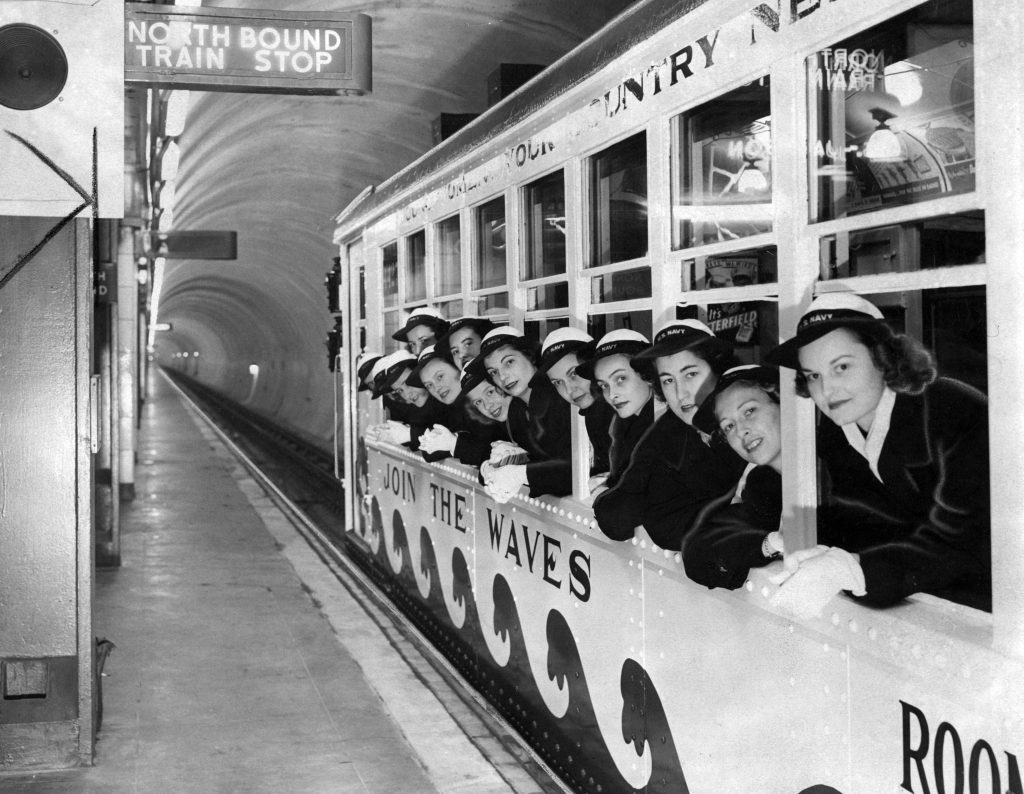Here’s a look back at what happened in the Chicago area on Oct. 16, according to the Tribune’s archives.
Is an important event missing from this date? Email us.
Weather records (from the National Weather Service, Chicago)
- High temperature: 87 degrees (1963)
- Low temperature: 28 degrees (1991)
- Precipitation: 1.41 inches (1878)
- Snowfall: Trace (2009)
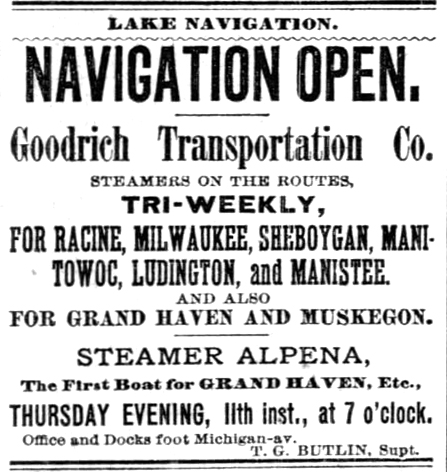 The advertisement for the passenger steamer ship Alpena, which was operated by Goodrich Transportation Co., was published on March 9, 1880, in the Tribune. (Chicago Tribune)
The advertisement for the passenger steamer ship Alpena, which was operated by Goodrich Transportation Co., was published on March 9, 1880, in the Tribune. (Chicago Tribune)
1880: The Alpena disappeared after it left Grand Haven, Michigan, and was bound for Chicago. The side-wheel steamer, operated by Goodrich Transportation Co., went missing during a storm with an estimated 80 passengers and crew aboard.
“Under the circumstances it is natural that alarm for her safety should exist in the minds of those who have friends on board,” the Tribune reported. “It is barely possible that she ran back to an east-shore harbor. But the lines are down and nothing can be learned from that direction.”
Three days later, debris and bodies of passengers from the Alpena were found floating near Holland, Michigan. The Alpena’s final location has not yet been discovered.
The disaster showed the vulnerability of paddle-wheel vessels in violent Great Lakes storms.
Because of the problems with sidewheelers, the screw propeller, like the steam engine, became popular on lake vessels long before it was common on ocean-going ships.
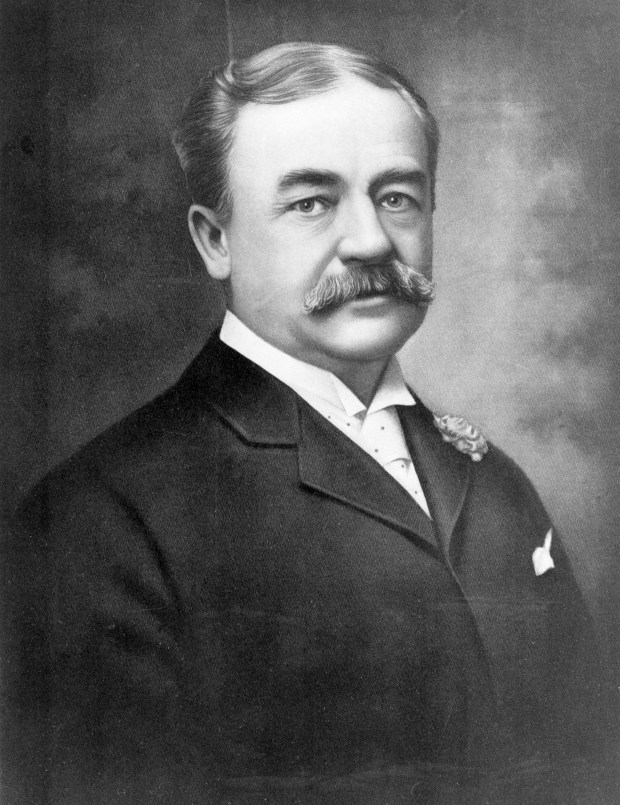 American business owner Montgomery Ward in an undated photo. (AP)
American business owner Montgomery Ward in an undated photo. (AP)
1890: Mail-order magnate Aaron Montgomery Ward filed suit to clear the city’s lakefront from Randolph to Madison streets “of the unsightly wooden shanties, structures, garbage, paving blocks, and other refuse piled thereon.”
According to Lois Wille’s 1972 history of the shoreline, “Forever Open, Clear, and Free,” Ward began his battle when he looked out his window at 6 N. Michigan Ave. one summer day and, appalled by what he saw, called out to his lawyer and friend George Merrick: “Merrick, this is a damned shame! Go and do something about it.”
Ward went to court three times between 1890 and 1909 to get the area, then known as Lake Park, cleared off and preserved as park space — and won each time. He forced the city to create and maintain the now 200-acre Grant Park and won legal recognition of citizens’ rights to have a say about the city’s parks.
“It has been an uphill fight, but the victory is sweet,” Ward told the Tribune in 1909. “Had I known in 1890 how long it would take me to preserve a park for the people against their will I doubt I would have undertaken it. … I have lived here since 1865 and have watched and assisted the city’s development, but this is one of the best things I ever did for Chicago.”
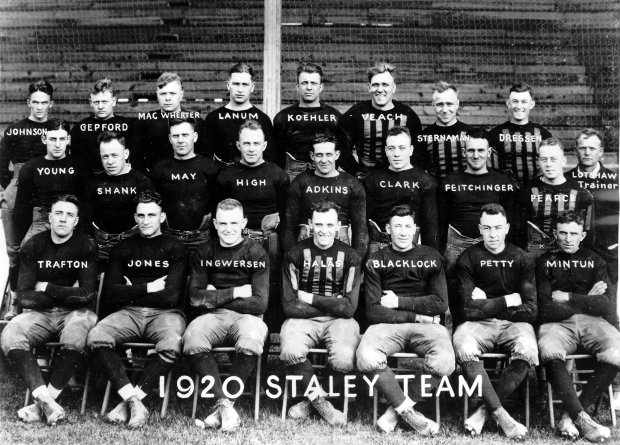 George Halas, center in front row, and the 1920 Decatur Staleys. They moved to Chicago and became the Bears. (Chicago Tribune archive)
George Halas, center in front row, and the 1920 Decatur Staleys. They moved to Chicago and became the Bears. (Chicago Tribune archive)
1921: The Decatur Staleys played their first game in their new home stadium — Wrigley Field. They came from behind to beat Rochester 16-13.
The next year, the team became known as the Chicago Bears.
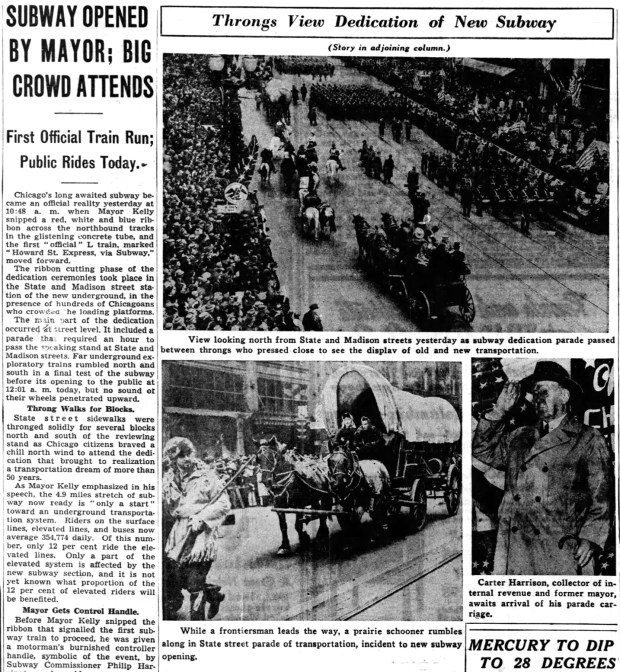 The city celebrated the opening of its subway system on Oct. 16, 1943, with a parade down State Street. (Chicago Tribune)
The city celebrated the opening of its subway system on Oct. 16, 1943, with a parade down State Street. (Chicago Tribune)
1943: Mayor Edward J. Kelly cut a red, white and blue ribbon at street level near State and Madison streets to open Chicago’s first subway system. Kelly told the crowd that the 4.9-mile stretch — which cost 10 cents per ride — was “only a start” toward an underground transportation system.
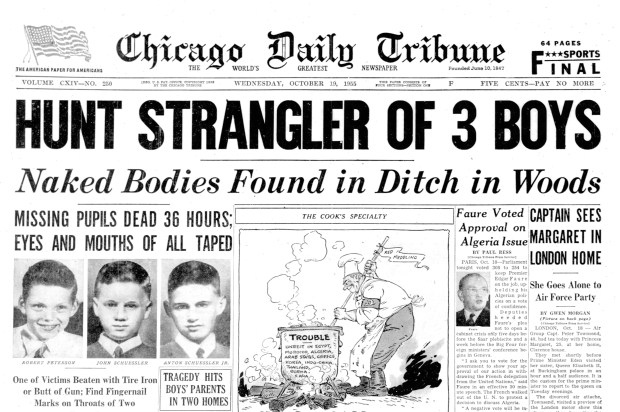 On Oct. 16, 1955, Robert Peterson, 14, and John Schuessler, 13, took the bus from their Jefferson Park neighborhood to a Loop theater to see a Disney matinee, “The African Lion.” They let John’s 11-year-old brother, Anton, tag along. Hitchhiking was a rite of passage at the time and somebody around Milwaukee Avenue — later identified as Kenneth Hansen — offered them a ride. The boys were never seen alive again. Two days later, their bodies were discovered in Robinson’s Woods. (Chicago Tribune)
On Oct. 16, 1955, Robert Peterson, 14, and John Schuessler, 13, took the bus from their Jefferson Park neighborhood to a Loop theater to see a Disney matinee, “The African Lion.” They let John’s 11-year-old brother, Anton, tag along. Hitchhiking was a rite of passage at the time and somebody around Milwaukee Avenue — later identified as Kenneth Hansen — offered them a ride. The boys were never seen alive again. Two days later, their bodies were discovered in Robinson’s Woods. (Chicago Tribune)
1955: Three boys — brothers John, 13, and Anton Schuessler, 11, and their friend Robert Peterson, 14 — disappeared after taking a train to the Loop to see a movie. Their naked and battered bodies turned up two days later in a ditch near a Northwest Side bridle path.
Police charged Kenneth Hansen in 1994 with driving the boys to a stable where he sexually abused them, then strangled them and later dumped their bodies in a forest preserve ditch. Hansen’s arrest was one development in an ATF investigation into the 1977 disappearance of Helen Brach, the multimillionaire candy heiress. Richard Bailey, an acquaintance of Hansen’s, was charged with soliciting Brach’s murder.
Hansen was found guilty of the slayings in 1995. While serving a 200-year sentence, he died in prison of natural causes in 2007.
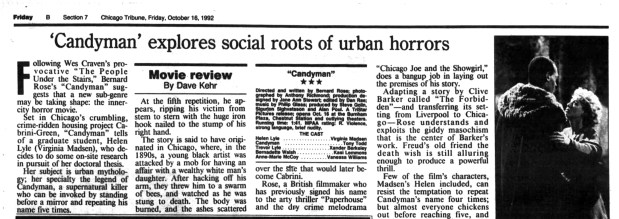 Tribune critic Dave Kehr said the 1992 inner-city horror movie “Candyman,” which was based in the city’s Cabrini-Green public housing development, captured “a rare, untouristy sense of the city.” (Chicago Tribune)
Tribune critic Dave Kehr said the 1992 inner-city horror movie “Candyman,” which was based in the city’s Cabrini-Green public housing development, captured “a rare, untouristy sense of the city.” (Chicago Tribune)
1992: “Candyman,” a horror film about a white graduate student (Virginia Madsen) researching the urban legend of a hooked-handed apparition (Tony Todd) who appears when his name is uttered five times, was released. The movie was set in the Cabrini-Green public housing complex.
Tribune critic Dave Kehr gave the film, which was revived in 2021 by director Nia DaCosta, three stars.
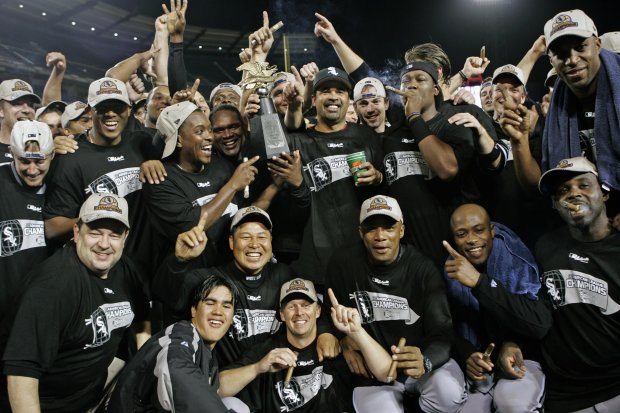 The Chicago White Sox celebrate after defeating the Los Angeles Angels 6-3 in Game 5 of the American League Championship Series on Oct. 16, 2005, in Anaheim. It was the first time the Sox won the American League pennant since 1959. (Charles Cherney/Chicago Tribune)
The Chicago White Sox celebrate after defeating the Los Angeles Angels 6-3 in Game 5 of the American League Championship Series on Oct. 16, 2005, in Anaheim. It was the first time the Sox won the American League pennant since 1959. (Charles Cherney/Chicago Tribune)
2005: The Chicago White Sox won their first American League pennant since the Go-Go White Sox of 1959, with a 6-3 come-from-behind win against the Los Angeles Angels in Anaheim.
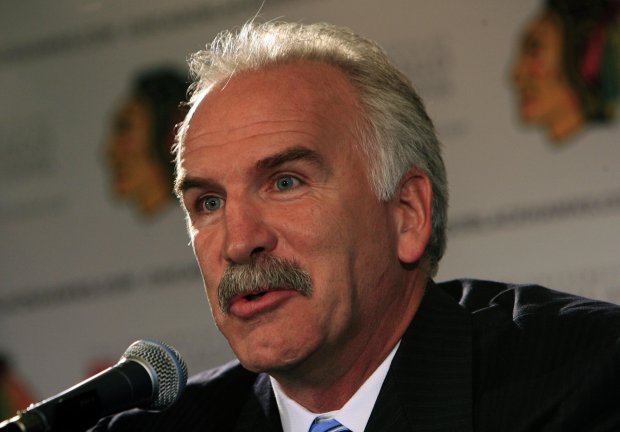 New Chicago Blackhawks head coach Joel Quenneville speaks to the media at the United Center on Oct. 16, 2008. Denis Savard was relieved of his duties earlier. (Alex Garcia/Chicago Tribune)
New Chicago Blackhawks head coach Joel Quenneville speaks to the media at the United Center on Oct. 16, 2008. Denis Savard was relieved of his duties earlier. (Alex Garcia/Chicago Tribune)
2008: Four games into the 2008-09 season, the Chicago Blackhawks hired Joel Quenneville to be the 37th coach in the franchise’s history.
Joel Quenneville resigns as Florida Panthers coach amid Chicago Blackhawks scandal
“Coach Q” led the Hawks to three Stanley Cup championships before he was fired six games into the 2018-19 season. He’s currently the coach of the Anaheim Ducks.
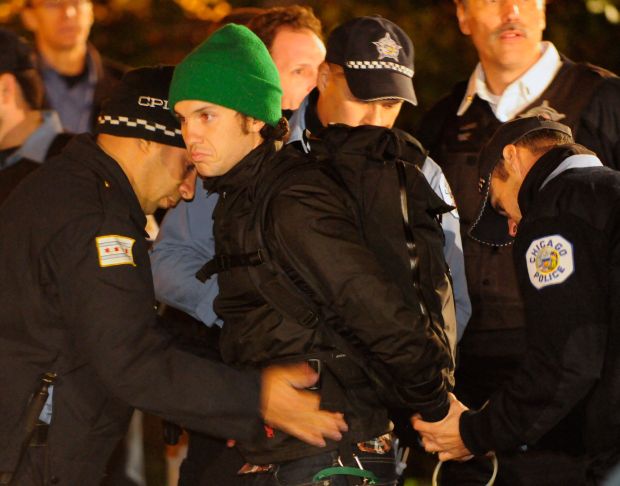 An Occupy Chicago protester is arrested by Chicago police in Congress Plaza early on Oct. 16. 2011. (Reid Compton/for the Chicago Tribune)
An Occupy Chicago protester is arrested by Chicago police in Congress Plaza early on Oct. 16. 2011. (Reid Compton/for the Chicago Tribune)
2011: Chicago police arrested 175 Occupy Chicago protesters in Congress Plaza just after 1 a.m., about 90 minutes after police issued their first warning that the group was violating municipal code.
Want more vintage Chicago?
Subscribe to the free Vintage Chicago Tribune newsletter, join our Chicagoland history Facebook group, stay current with Today in Chicago History and follow us on Instagram for more from Chicago’s past.
Have an idea for Vintage Chicago Tribune? Share it with Kori Rumore and Marianne Mather at krumore@chicagotribune.com and mmather@chicagotribune.com
